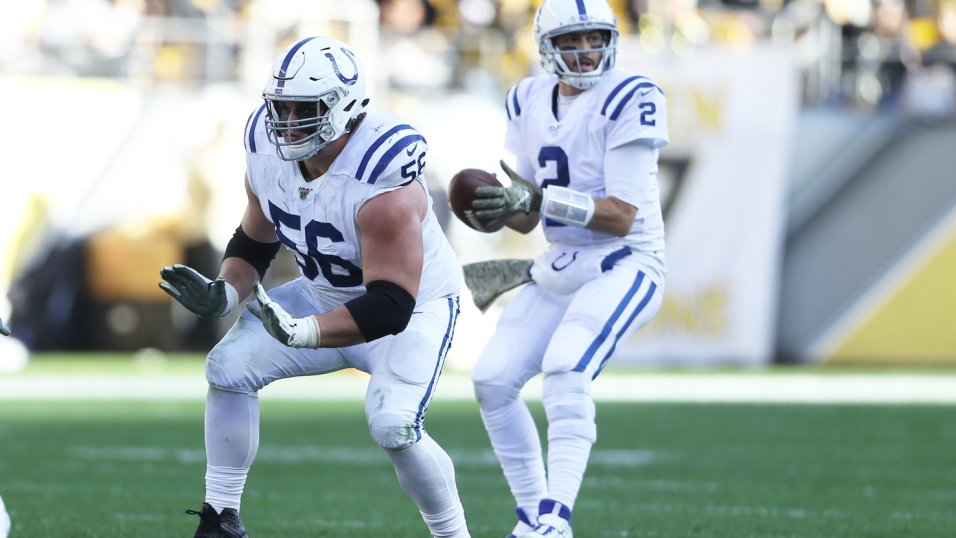Run Line Nfl
Run defense matters. Mack’s overall grade of 95.2 was also far higher than Beasley’s 74.2 because Khalil Mack was one of the best run defenders in the game, capable of shedding blocks and knifing into the backfield to blow up plays. NFL Offensive Lines. Remember when the Broncos, in the late 90’s, could seemingly run any running back out there and he would rush for a thousand yards a season? That was the advent of the great schism in offensive line philosophies – Zone and Man (or Angle).

The rectangular field of play used for American football games measures 100 yards (91.44 m) long between the goal lines, and 160 feet (48.8 m) (531⁄3 yards) wide. The field is made of grass. In addition, there are end zones extending another 10 yards (9.144 m) past the goal lines to the 'end lines', for a total length of 120 yards (109.7 m). When the 'football field' is used as unit of measurement, it is usually understood to mean 100 yards (91.44 m), although technically the full length of the official field, including the end zones, is 120 yards (109.7 m). There is a goal centered on each end line, with a crossbar 10 feet (3.0 m) above the ground and goalposts 18 feet 6 inches (5.64 m) apart extending at least 35 feet (11 m) above the crossbar. Between the goal lines, additional lines span the width of the field at 5-yard intervals. These lines give the football field an appearance resembling that of a gridiron, which gives rise to 'gridiron' being a nickname for a football field and for the sport itself.

This article mainly describes the field used in the National Football League, college football, and other leagues playing (traditionally) outdoor 11-man football. Other variants of American football such as nine-man or arena football typically use smaller fields with smaller end zones.
Field description[edit]

The entire field is a rectangle 360 feet (110 m) long by 160 feet (49 m) wide. The longer lines are the sidelines and the shorter lines are called end lines. NFL rules call for the sidelines and end lines to be 6 feet (1.8 m) wide, though the lines may be narrower on fields used for multiple sports or by college or amateur teams. In all cases the sidelines and end lines are measured along the inside edges of the boundary lines, and the lines themselves are out of bounds. Most distances on a football field are expressed in terms of yards.
The goal lines span the width of the field and run 10 yards (9.1 m) parallel to each end line. The 100 yards between the goal lines where most gameplay occurs is officially called the field of play in the NFL rulebook. Additional lines span the width of the field at 5-yard intervals from each goal line.
End zones[edit]
The areas at each end of the field between the goal lines and end lines – including the goal lines themselves – are called the end zones. The end zones are where touchdowns, two-point conversions, and safeties are scored, and where touchbacks occur. Orange weighted pylons mark the four corners of each end zone. Team or league logos or other patterns may be painted inside the end zone as long as they do not interfere with the mandatory field markings.

Goals[edit]

A goal is centered on each end line, consisting of a horizontal crossbar 10 feet (3.0 m) above the ground and aligned with the inside edge of the end line, with vertical goal posts (colloquially 'uprights') at each end of the crossbar 18 feet 6 inches (5.64 m) apart and extending at least 35 feet (11 m) above the crossbar. The goals are where field goals (including rare fair catch kicks) and extra points after touchdowns are scored. All NFL fields and many collegiate and amateur fields have slingshot-shaped goal structures, with a single gooseneck-shaped support post anchored to the ground out of bounds. Other amateur fields, particularly at the high school level, may have H-shaped goal structures with two support posts anchored to the ground directly below the crossbar; on fields used for multiple sports these goals may double as soccer goals. The NFL requires a ribbon to be attached to the top of each goal post to indicate wind direction and speed. Goal posts must be yellow in the NFL; collegiate fields may have yellow or white goal posts. Amateur fields may also have shorter goal posts or a wider space between the goal posts.[1][2][3]
Yard lines[edit]
A yard line refers to the distance of some point on the 100-yard field of play – usually the line of scrimmage or the spot where a play ends – from the nearest goal line.[4] When moving away from one goal line, the yard line numbers increase from 1 to 50 (midfield), then decrease back to 1 approaching the opposite goal line. Each yard line is said to 'belong' to the team defending the closer end zone; for example, during a period where Team A is defending the north end zone and Team B is defending the south end zone, the 25-yard line closer to the north end zone is said to be Team A's 25-yard line.
Yard lines are identified with two rows of white numbers painted inside each sideline at 10-yard intervals; the numbers 10 through 40 also include an arrow indicating the nearer goal line. NFL rules call for the top edge of each number to be 12 yards from the sideline. The yard lines are also identified at 10-yard intervals by orange markers placed outside the sidelines adjacent to the respective line. Yard lines other than multiples of 5 are marked by 2-foot (0.61 m) lines painted parallel to the goal lines at 1-yard intervals spanning the length of the field just inside each sideline as well as at the hash marks (see below).
Hash marks[edit]
The hash marks (officially inbounds lines in the NFL rulebook) are two rows of short lines running the length of the field that mark the boundaries of where a scrimmage down may start. If the ball is downed outside the hash marks or run out of bounds, the next play begins at the hash mark closest to the spot where it is downed. In the NFL the hash marks are 70 feet 9 inches (21.56 m) from each sideline; in college football they are 60 feet (18 m) from each sideline. At each 5-yard line they are marked with 2-foot (0.61 m) lines painted parallel to the sidelines. Between the 5-yard lines they are marked with 2-foot lines painted perpendicular to the sidelines at 1-yard intervals. The hash marks are painted so that the edge farthest from the sideline is the required distance from the sideline.
In the NFL and most forms of indoor football, the hash marks are in line with the goalposts. College and high school football fields have hash marks that are significantly wider than the goal posts. The college football standard, which was the previous standard in the NFL (from 1945 to 1971), is 40 feet apart (20 yards from the sidelines),[5] introduced in 1993.[6][7] Previously, the college width was the same as the high school standard, at one-third of the width of the field (531⁄3 feet).
Other markings[edit]
A 3-foot (0.91 m) line is painted parallel to the goal line at the center of the 2-yard line; this denotes the line of scrimmage for a two-point conversion attempt, and for an extra point attempt in college football (the NFL line of scrimmage for an extra point was also at the 2-yard line prior to 2015).
Run Line Nfl Picks
A small X may be painted at the center of each 35-yard line on NFL or college fields to indicate the spot where kickoffs are taken.
Most professional and collegiate fields have a team or league logo painted at the 50-yard line. Special games such as the Super Bowl or college bowl games may have the event logo painted at the 50-yard line. These logos as well as any other non-mandatory field markings require league approval and may not interfere with mandatory field markings.
According to the high school rulebook recommendations, the field should be angled at approximately 1.2° (rising 1⁄4 inch per foot, or 1 in 48) upward from each sideline to the center of the field so that the center is 20 inches (51 cm) higher than the sidelines.[8]
References[edit]
- ^NFL Rules 2012, p. 2.
- ^NCAA Rules 2011–2012, p. 18.
- ^NFHS Rules 2012, p. 14.
- ^http://www.sportingcharts.com/dictionary/nfl/yard-line.aspx
- ^'High On The Hash'. Sports Illustrated. (CNN). August 28, 1972.
- ^Chaptman, Dennis (March 26, 1993). 'Moving hash marks should open offenses'. Milwaukee Journal. p. C2.
- ^Clark, Bob (September 2, 1993). 'New rules to keep coaches on toes'. Eugene Register-Guard. Oregon. p. 9F.
- ^NFHS Rules 2012, pp. 11–12, 13, 28.